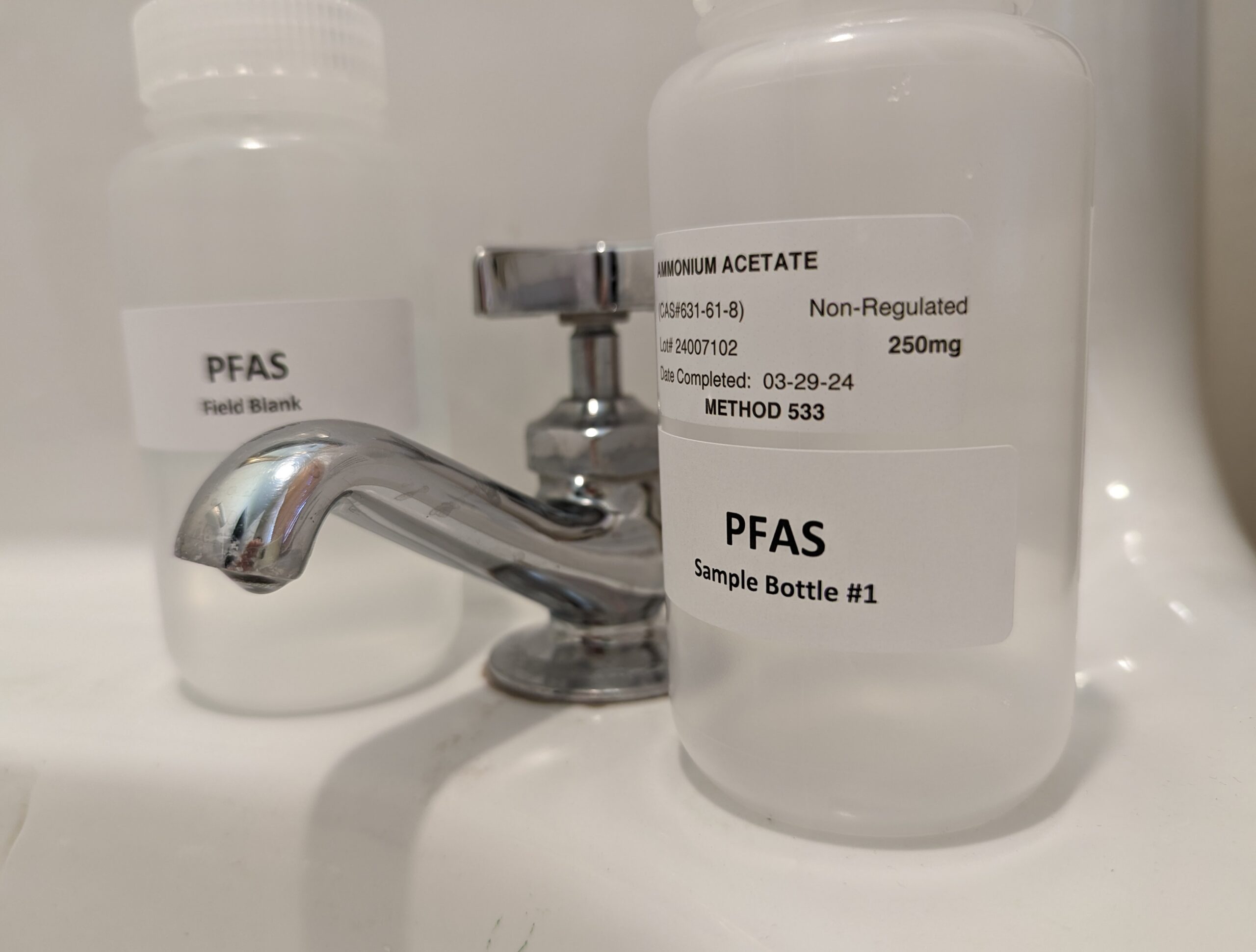PFAS contamination climbs in Twin Cities wells as state testing expands – ehn.org

Report on PFAS Contamination in Minnesota and Implications for Sustainable Development Goals
Introduction
Recent findings of extensive Per- and Polyfluoroalkyl Substances (PFAS) contamination in private wells across Minnesota’s east metro region present significant challenges to achieving key Sustainable Development Goals (SDGs). The contamination, originating from legacy industrial pollution, directly impacts public health, water safety, and environmental integrity, requiring a multi-faceted response aligned with the principles of sustainable development.
Impact on SDG 3: Good Health and Well-being
The presence of PFAS in drinking water is a direct threat to human health, undermining the objectives of SDG 3. These “forever chemicals” are linked to severe health outcomes and create long-term public health risks.
- PFAS exposure is associated with cancers, harm to the immune system, and developmental delays in children.
- The chemicals accumulate in human blood and organs over time, posing a cumulative risk.
- Health officials acknowledge the danger, with Kristine Klos of the Minnesota Department of Health stating, “There is a cancer component to PFAS, unfortunately we don’t know how long you need to be exposed or how much PFAS you need to be exposed to.”
Challenges to SDG 6: Clean Water and Sanitation
The contamination crisis represents a critical failure in ensuring access to safe and clean water, a core target of SDG 6. The scale of the problem highlights systemic vulnerabilities in water resource protection.
- State regulators flagged 420 private wells for elevated PFAS levels in the last year alone.
- Since testing began in 2003, more than 2,000 wells have been identified as contaminated.
- The chemical plume is reportedly moving towards the Mississippi and St. Croix rivers, threatening the primary water sources for numerous downstream communities and challenging the goal of protecting water-related ecosystems.
Addressing Contamination through SDG 11 and SDG 12
Mitigation efforts reflect the principles of SDG 11 (Sustainable Cities and Communities) by investing in resilient infrastructure and SDG 12 (Responsible Consumption and Production) by holding producers accountable for industrial waste.
Community Resilience and Infrastructure (SDG 11)
- A $330 million water treatment facility is being constructed in Woodbury to filter PFAS from municipal water systems.
- Dozens of additional projects are underway to safeguard community water supplies, demonstrating investment in sustainable and safe urban infrastructure.
Corporate Accountability and Legacy Pollution (SDG 12)
- The contamination is attributed to decades of chemical dumping from industrial manufacturing by 3M.
- Remediation projects are funded by a financial settlement with 3M, establishing a precedent for corporate responsibility in addressing the environmental and health consequences of production patterns.
Long-Term Threats to SDG 14 and SDG 15
The persistence of PFAS in the environment poses a lasting threat to ecosystems, directly impacting SDG 14 (Life Below Water) and SDG 15 (Life on Land). As “forever chemicals,” they resist degradation and can spread through aquifers for decades, creating a legacy of pollution that is difficult and costly to manage.
- The movement of PFAS into major river systems like the Mississippi and St. Croix poses a significant risk to aquatic life and the health of these vital ecosystems.
- Once groundwater is contaminated, removing the chemicals requires expensive and continuous intervention, illustrating how past industrial practices can resurface to threaten environmental sustainability years later.
1. Which SDGs are addressed or connected to the issues highlighted in the article?
-
SDG 3: Good Health and Well-being
The article directly connects PFAS contamination to severe health risks, including “cancers, immune system harm and developmental delays in children.” The quote from the Minnesota Department of Health reinforces this by mentioning the “cancer component to PFAS,” highlighting the threat to human health and well-being.
-
SDG 6: Clean Water and Sanitation
The core issue is the contamination of drinking water sources. The article states that “420 private wells” were flagged for elevated PFAS levels and that these chemicals are “increasingly found in drinking water.” The spread of the chemical plume towards the Mississippi and St. Croix rivers threatens the primary water sources for downstream communities, making this a critical water quality and safety issue.
-
SDG 11: Sustainable Cities and Communities
The contamination is a localized environmental problem affecting a specific community, “Minnesota’s east metro.” The response, including the construction of a “$330 million treatment facility in Woodbury,” is an effort to build resilient infrastructure and make the community safer from the environmental and health impacts of industrial pollution.
-
SDG 12: Responsible Consumption and Production
The problem’s origin is “decades of 3M chemical dumping,” which points to unsustainable and irresponsible production patterns. The fact that a settlement with 3M is funding the cleanup efforts relates to the principle of holding producers accountable for the entire life cycle of their products and waste.
2. What specific targets under those SDGs can be identified based on the article’s content?
-
SDG 3: Good Health and Well-being
- Target 3.9: By 2030, substantially reduce the number of deaths and illnesses from hazardous chemicals and air, water and soil pollution and contamination. The entire article focuses on the health risks posed by PFAS, which are hazardous chemicals contaminating water sources, directly aligning with this target.
-
SDG 6: Clean Water and Sanitation
- Target 6.1: By 2030, achieve universal and equitable access to safe and affordable drinking water for all. The flagging of over 2,000 wells since 2003 indicates that residents in the affected area do not have access to safe drinking water. The construction of treatment facilities is a direct action towards achieving this target.
- Target 6.3: By 2030, improve water quality by reducing pollution, eliminating dumping and minimizing release of hazardous chemicals and materials. The historical dumping by 3M is the root cause of the pollution, and the ongoing spread of the chemical plume represents a failure to meet this target. Current cleanup efforts aim to mitigate the damage and improve water quality.
-
SDG 11: Sustainable Cities and Communities
- Target 11.5: By 2030, significantly reduce the number of deaths and the number of people affected… caused by disasters, including water-related disasters. The widespread chemical contamination can be viewed as a slow-moving, man-made, water-related disaster affecting thousands of residents in the east metro community.
-
SDG 12: Responsible Consumption and Production
- Target 12.4: By 2020, achieve the environmentally sound management of chemicals and all wastes throughout their life cycle… and significantly reduce their release to air, water and soil. The legacy of 3M’s chemical dumping demonstrates a historical failure to adhere to this target, and the current situation is a direct consequence of that failure.
3. Are there any indicators mentioned or implied in the article that can be used to measure progress towards the identified targets?
-
Number of Contaminated Wells
The article explicitly states that “420 private wells” were flagged last year and “more than 2,000 wells have been flagged since testing began in 2003.” This number serves as a direct indicator of the population’s exposure to unsafe water (relevant to Targets 3.9, 6.1, and 11.5) and the extent of groundwater contamination (relevant to Target 6.3).
-
Investment in Water Treatment Infrastructure
The mention of a “$330 million treatment facility in Woodbury and dozens of other projects” is a financial and infrastructural indicator. It measures the scale of the response to provide safe drinking water and remediate the pollution, tracking progress towards Target 6.1.
-
Spread of Contamination to Major Waterways
The fact that the “chemical plume moves toward the Mississippi and St. Croix rivers” is a critical indicator of worsening water quality. Monitoring the PFAS levels in these rivers would be an indicator for Target 6.3, measuring the failure to contain the pollution and the potential risk to downstream communities.
4. Table of SDGs, Targets, and Indicators
| SDGs | Targets | Indicators |
|---|---|---|
| SDG 3: Good Health and Well-being | 3.9: Substantially reduce illnesses from hazardous chemicals and water pollution. | The number of people whose wells are flagged for elevated PFAS levels (420 last year, over 2,000 total), representing the population exposed to health risks. |
| SDG 6: Clean Water and Sanitation | 6.1: Achieve universal access to safe drinking water.
6.3: Improve water quality by reducing pollution and eliminating dumping. |
The number of contaminated wells indicating a lack of safe water access.
The spread of the chemical plume towards the Mississippi and St. Croix rivers as a measure of deteriorating water quality. |
| SDG 11: Sustainable Cities and Communities | 11.5: Reduce the number of people affected by water-related disasters. | The number of residents in the east metro area with flagged wells who are affected by the chemical contamination disaster. |
| SDG 12: Responsible Consumption and Production | 12.4: Achieve environmentally sound management of chemicals and wastes. | The existence of the chemical plume from “decades of 3M chemical dumping” serves as a qualitative indicator of past failure to manage chemical waste responsibly. The $330 million settlement cost is a financial indicator of the consequences. |
Source: ehn.org

What is Your Reaction?
 Like
0
Like
0
 Dislike
0
Dislike
0
 Love
0
Love
0
 Funny
0
Funny
0
 Angry
0
Angry
0
 Sad
0
Sad
0
 Wow
0
Wow
0



























;Resize=805#)




















































